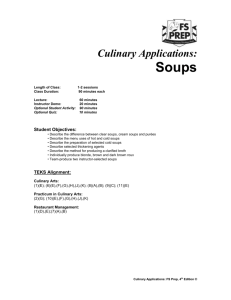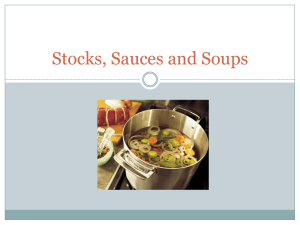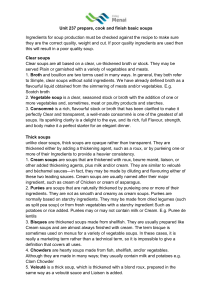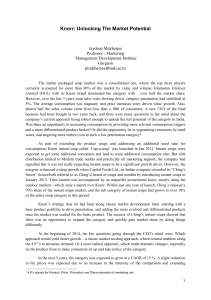January 12-16, 2015
advertisement
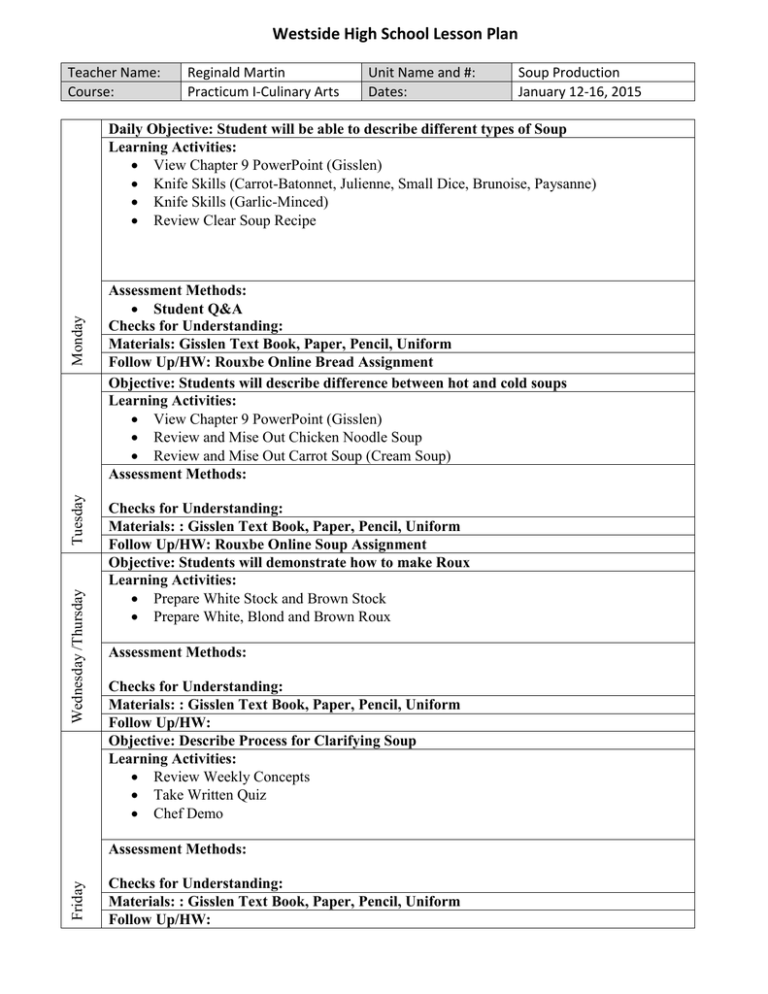
Westside High School Lesson Plan Teacher Name: Course: Reginald Martin Practicum I-Culinary Arts Unit Name and #: Dates: Soup Production January 12-16, 2015 Wednesday /Thursday Tuesday Monday Daily Objective: Student will be able to describe different types of Soup Learning Activities: View Chapter 9 PowerPoint (Gisslen) Knife Skills (Carrot-Batonnet, Julienne, Small Dice, Brunoise, Paysanne) Knife Skills (Garlic-Minced) Review Clear Soup Recipe Assessment Methods: Student Q&A Checks for Understanding: Materials: Gisslen Text Book, Paper, Pencil, Uniform Follow Up/HW: Rouxbe Online Bread Assignment Objective: Students will describe difference between hot and cold soups Learning Activities: View Chapter 9 PowerPoint (Gisslen) Review and Mise Out Chicken Noodle Soup Review and Mise Out Carrot Soup (Cream Soup) Assessment Methods: Checks for Understanding: Materials: : Gisslen Text Book, Paper, Pencil, Uniform Follow Up/HW: Rouxbe Online Soup Assignment Objective: Students will demonstrate how to make Roux Learning Activities: Prepare White Stock and Brown Stock Prepare White, Blond and Brown Roux Assessment Methods: Checks for Understanding: Materials: : Gisslen Text Book, Paper, Pencil, Uniform Follow Up/HW: Objective: Describe Process for Clarifying Soup Learning Activities: Review Weekly Concepts Take Written Quiz Chef Demo Friday Assessment Methods: Checks for Understanding: Materials: : Gisslen Text Book, Paper, Pencil, Uniform Follow Up/HW: Culinary Applications: Soups Length of Class: Class Duration: 1-2 sessions 90 minutes each Lecture: Instructor Demo: Optional Student Activity: Optional Quiz: 60 minutes 20 minutes 90 minutes 10 minutes Student Objectives: • Describe the difference between clear soups, cream soups and purées • Describe the menu uses of hot and cold soups • Describe the preparation of selected cold soups • Describe selected thickening agents • Describe the method for producing a clarified broth • Individually produce blonde, brown and dark brown roux • Team-produce two instructor-selected soups TEKS Alignment: Culinary Arts: (1)(E); (6)(E),(F),(G),(H),(J),(K); (8)(A),(B); (9)(C); (11)(E) Practicum in Culinary Arts: (2)(G); (10)(E),(F),(G),(H),(J),(K) Restaurant Management: (1)(D),(E);(7)(A),(B) Foodservice Prep Texas Restaurant Association Education Foundation Culinary Applications: Soups Lecture and Lab Guide I. Classification of soups See: Foundations of Restaurant Management & Culinary Arts, Level I, pp. 393-400 A. Thin soups See: Professional Cooking, 7th Edition, pp. 224-237 1. Broth and bouillon 2. Consommé 3. Clear vegetable 4. Clarification B. Thick soups See: Professional Cooking, 7th Edition, pp. 238-256 1. Thickening agents and techniques See: Professional Cooking, 7th Edition, pp. 172-175 a. Roux Instructor Demonstration: Dark brown roux See: Professional Cooking, 7th Edition, pp. 176-177 b. Beurre maine c. Liaison d. Cornstarch e. Arrowroot f. “White wash” g. Other vegetable starches h. How starches work i. Emulsification j. Reduction C. Hearty soups 1. Gumbo 2. Chili 3. Vegetable D. Cream soups and chowders See: Professional Cooking, 7th Edition, pp. 238-239 E. Purées See: Professional Cooking, 7th Edition, pp. 257-272 F. Specialty soups 1. Ethnic and regional 2. Cold soups a. Cucumber b. Gazpacho c. Consommé d. Potato e. Borscht f. Fruit G. Finishing soups See: Professional Cooking, 7th Edition, pp. 225-226 1. Garnishing and enrichment 2. Using base to replace or enhance stock 3. Cooling, storing and reheating procedures Foodservice Prep Texas Restaurant Association Education Foundation Optional Student Activities: Team preparation of two instructor-selected soups utilizing the ingredients from Culinary lesson: Stock Production. Individual preparation of roux, from blonde to dark brown. A. Work station setup 1. Sanitizing 2. Mise en place 3. Equipment selection 4. Stock production 5. Straining and reduction 6. Chilling and storing Reading Assignment: Professional Cooking, 7th Edition, Wayne Gisslen, Chapter 9. Foundations of Restaurant Management & Culinary Arts, Level I, pp. 393-400 Resources: On Cooking: A Textbook of Culinary Fundamentals, Labensky and Hause, Chapter 11.
